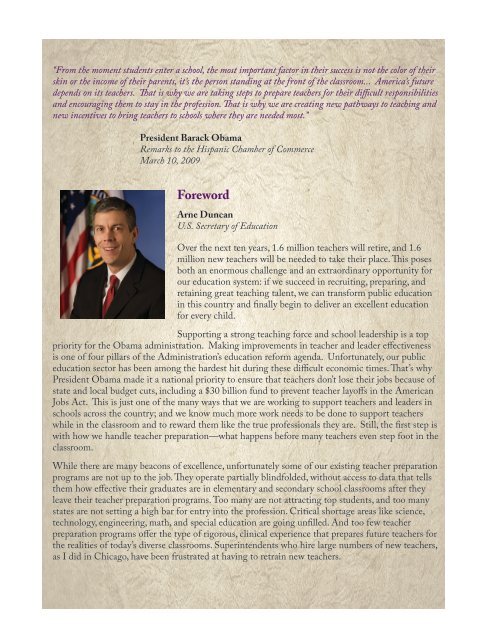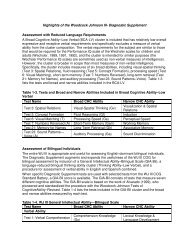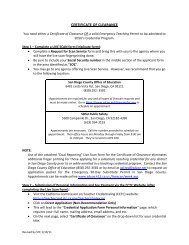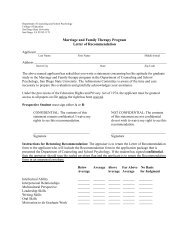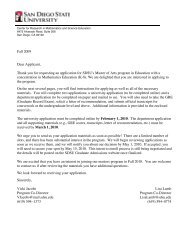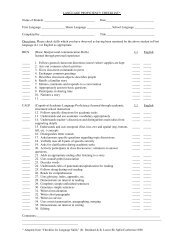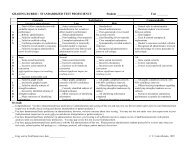Our Future, Our Teachers - U.S. Department of Education
Our Future, Our Teachers - U.S. Department of Education
Our Future, Our Teachers - U.S. Department of Education
Create successful ePaper yourself
Turn your PDF publications into a flip-book with our unique Google optimized e-Paper software.
“From the moment students enter a school, the most important factor in their success is not the color <strong>of</strong> theirskin or the income <strong>of</strong> their parents, it’s the person standing at the front <strong>of</strong> the classroom... America’s futuredepends on its teachers. That is why we are taking steps to prepare teachers for their difficult responsibilitiesand encouraging them to stay in the pr<strong>of</strong>ession. That is why we are creating new pathways to teaching andnew incentives to bring teachers to schools where they are needed most.”President Barack ObamaRemarks to the Hispanic Chamber <strong>of</strong> CommerceMarch 10, 2009ForewordArne DuncanU.S. Secretary <strong>of</strong> <strong>Education</strong>Over the next ten years, 1.6 million teachers will retire, and 1.6million new teachers will be needed to take their place. This posesboth an enormous challenge and an extraordinary opportunity forour education system: if we succeed in recruiting, preparing, andretaining great teaching talent, we can transform public educationin this country and finally begin to deliver an excellent educationfor every child.Supporting a strong teaching force and school leadership is a toppriority for the Obama administration. Making improvements in teacher and leader effectivenessis one <strong>of</strong> four pillars <strong>of</strong> the Administration’s education reform agenda. Unfortunately, our publiceducation sector has been among the hardest hit during these difficult economic times. That’s whyPresident Obama made it a national priority to ensure that teachers don’t lose their jobs because <strong>of</strong>state and local budget cuts, including a $30 billion fund to prevent teacher lay<strong>of</strong>fs in the AmericanJobs Act. This is just one <strong>of</strong> the many ways that we are working to support teachers and leaders inschools across the country; and we know much more work needs to be done to support teacherswhile in the classroom and to reward them like the true pr<strong>of</strong>essionals they are. Still, the first step iswith how we handle teacher preparation—what happens before many teachers even step foot in theclassroom.While there are many beacons <strong>of</strong> excellence, unfortunately some <strong>of</strong> our existing teacher preparationprograms are not up to the job. They operate partially blindfolded, without access to data that tellsthem how effective their graduates are in elementary and secondary school classrooms after theyleave their teacher preparation programs. Too many are not attracting top students, and too manystates are not setting a high bar for entry into the pr<strong>of</strong>ession. Critical shortage areas like science,technology, engineering, math, and special education are going unfilled. And too few teacherpreparation programs <strong>of</strong>fer the type <strong>of</strong> rigorous, clinical experience that prepares future teachers forthe realities <strong>of</strong> today’s diverse classrooms. Superintendents who hire large numbers <strong>of</strong> new teachers,as I did in Chicago, have been frustrated at having to retrain new teachers.


